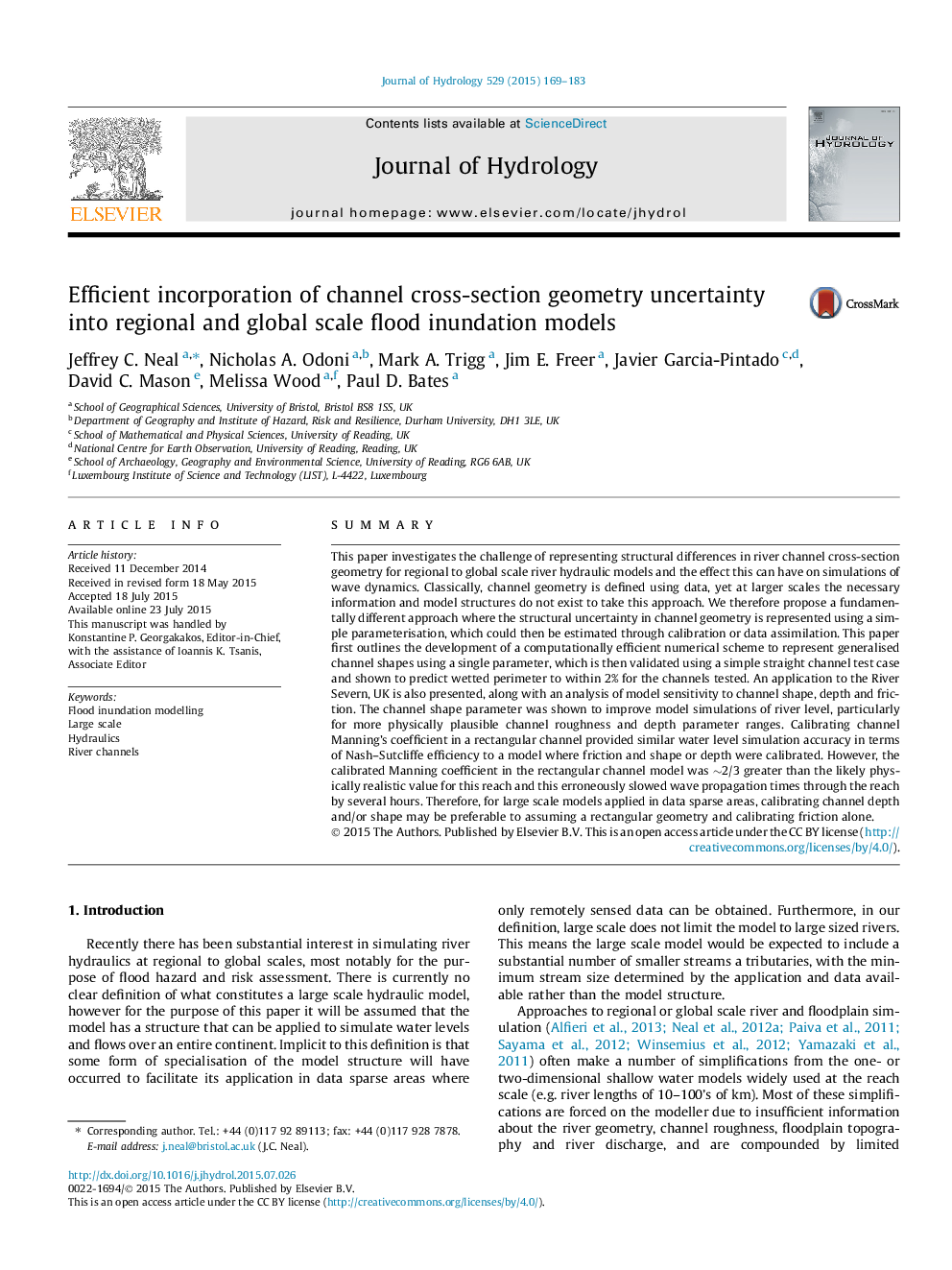| کد مقاله | کد نشریه | سال انتشار | مقاله انگلیسی | نسخه تمام متن |
|---|---|---|---|---|
| 6410985 | 1332887 | 2015 | 15 صفحه PDF | دانلود رایگان |
- Efficient large scale flood inundation model.
- Channel shape, depth and friction parameterised.
- Allows power curve shaped channels to be simulated.
- New method to accurately approximate wetted perimeter.
- Evaluated using test case on the River Severn.
SummaryThis paper investigates the challenge of representing structural differences in river channel cross-section geometry for regional to global scale river hydraulic models and the effect this can have on simulations of wave dynamics. Classically, channel geometry is defined using data, yet at larger scales the necessary information and model structures do not exist to take this approach. We therefore propose a fundamentally different approach where the structural uncertainty in channel geometry is represented using a simple parameterisation, which could then be estimated through calibration or data assimilation. This paper first outlines the development of a computationally efficient numerical scheme to represent generalised channel shapes using a single parameter, which is then validated using a simple straight channel test case and shown to predict wetted perimeter to within 2% for the channels tested. An application to the River Severn, UK is also presented, along with an analysis of model sensitivity to channel shape, depth and friction. The channel shape parameter was shown to improve model simulations of river level, particularly for more physically plausible channel roughness and depth parameter ranges. Calibrating channel Manning's coefficient in a rectangular channel provided similar water level simulation accuracy in terms of Nash-Sutcliffe efficiency to a model where friction and shape or depth were calibrated. However, the calibrated Manning coefficient in the rectangular channel model was â¼2/3 greater than the likely physically realistic value for this reach and this erroneously slowed wave propagation times through the reach by several hours. Therefore, for large scale models applied in data sparse areas, calibrating channel depth and/or shape may be preferable to assuming a rectangular geometry and calibrating friction alone.
Journal: Journal of Hydrology - Volume 529, Part 1, October 2015, Pages 169-183
